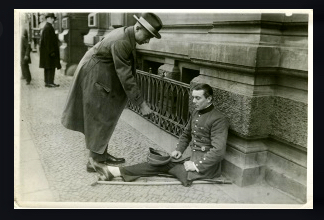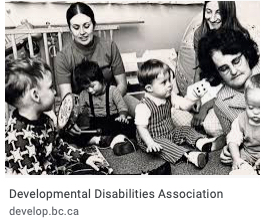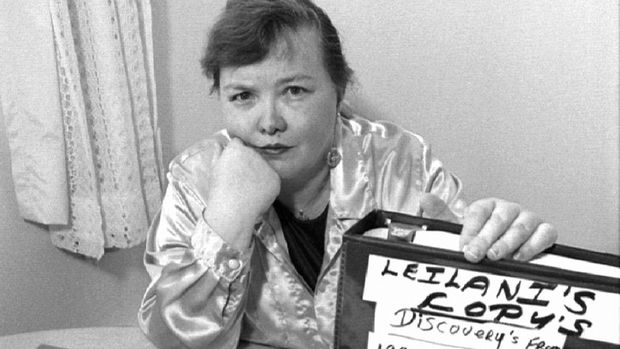Disability Awareness and Rights
Major historical events, such as the world wars, increased disability awareness and advocacy. Rehabilitation for injured WWI soldiers and the creation of Canadian National Institute for the Blind are both examples of growing movements advocating for equal rights, rehabilitation, and inclusion of people with disabilities.
The civil rights movement of the 1950s and 1960s encouraged equal rights and opportunities for children and adults with disabilities. Parents of children with disabilities were motivated by the racial desegregation of schools in the United States to demand educational opportunities for their children.
As you explore the Disability Awareness and Rights timeline, reflect/journal on the following:
- What obstacles and barriers stood in the way of disability rights in the 1950s and 1960s?
- What other forms of segregation (other than exclusion because of disability) have existed in the school system?
- How much do you think inclusion of students with disabilities in B.C. was influenced by the American disability rights movement?
-
19th Century
-
In 1890, B.C. enacted legislation for the education of children with disabilities. Deaf children from B.C. could now be sent to the Institution for the Deaf and Dumb in Winnipeg.
From institution to inclusion, a history of special education in B.C. schools
-
20th Century
-
Huge numbers of disabled soldiers returned from the First World War. Long-term medical care and vocational training were provided to restore veterans’ independence and ability to work. Programs were developed to address all aspects of rehabilitation, including physiotherapy and vocational training, which looked at disability in terms of function. Programs to assist disabled WWI veterans in their return to work helped develop the concept of rehabilitation and provided the expectation that people with disabilities could be productive participants in society.
The first world war drives rehabilitation toward the modern concepts of disability and participation

-
On December 6, 1917, two ships collided in the Halifax harbour. One ship was loaded with munitions being shipped to battlefields in WWI. The blast was the largest human-made explosion ever recorded before the atomic bomb. Two thousand people were killed and another 9000 were maimed or blinded. The event was the largest mass blinding in Canadian history and led to the founding of the Canadian National Institute for the Blind (CNIB).
The Halifax Explosion and the CNIB

-
“The Universal Declaration of Human Rights (UDHR) is a milestone document in the history of human rights. Drafted by representatives with different legal and cultural backgrounds from all regions of the world, the Declaration was proclaimed by the United Nations General Assembly in Paris on the 10 December 1948 (General Assembly resolution 217 A) as a common standard of achievements for all peoples and all nations. It sets out, for the first time, fundamental human rights to be universally protected and it has been translated into over 500 languages.”
"About Us - UDHR", United Nations
-
Advocacy groups for people with disabilities were formed soon after the UN Declaration of Human Rights, including United Cerebral Palsy (1948), the Muscular Dystrophy Association (1950) and the National Association for Retarded Children (1953).
-
In the mid-1950s, what came to be known as the Parents’ Movement began. At the time, the government took no responsibility for educating children with disabilities. Physicians advised families to place children with disabilities in an institution where the child would be cared for, so families could get on with their lives. An increasing number of parents rejected institutional placement and wanted to raise their children at home. Many parents were struggling to find ways to educate their children, who, because of their "mental retardation" label, were entirely excluded from the public school system.
As part of the larger movement of parents advocating for their children with disabilities, several B.C. parent groups came together to form the B.C. Association for Retarded Children (ARC B.C.). Believing that their children were able to learn, the group initially focused on education.
“On May 21, 1954, Dr. Donald Paterson, a consulting pediatrician for the Handicapped Children’s Registry, called a meeting of all persons ‘interested in the advancement of mentally retarded children.’”
"Our History" - Inclusion BC
ARC B.C. went through several name changes, including the B.C. Association for Community Living, and currently Inclusion BC.

-
U.S. president John F. Kennedy’s sister Rosemary was said to have intellectual and behavioural challenges. Kennedy launched the President’s Panel on Mental Retardation in the early 1960s. Senator Robert Kennedy visited several institutions in New York State on whirlwind tours. Afterward, he declared to an oblivious public that:
“In our country, today, human beings are being treated less humanely, with less care, and under more deplorable conditions than animals.”
Senator Robert F. Kennedy
-
Ed Roberts, a man with quadriplegia post-polio, was the first student with significant disabilities to enrol at the University of California at Berkeley. It was the beginning of the Disability Rights Movement. A local paper carried the headline, “Hopeless Cripple Goes to School.” Roberts became an international leader in the Independent Living Movement, fighting for civil rights and opportunities for people with disabilities.
-
In 1972, Alberta MLA David King introduced a bill to repeal the provincial sterilization act, saying:
“The act violates fundamental human rights. We are provided with an act, the basis of which is a presumption that society, or at least the government, knows what kind of people can be allowed children and what kind of people cannot. It is our view that this is a reprehensible and intolerable philosophy and program for this province and this government.”
MLA David King
Following Alberta’s lead, B.C. repealed its Sexual Sterilization Act in 1973. It had been in effect for 40 years. The B.C. and Alberta governments have both had lawsuits brought against them for unlawful sterilization.
-
The People First movement began when people with intellectual disabilities from all over North America met to express their desire to move out of institutions and live in the community. People First continues to advocate for inclusion and meaningful participation in the community and to lobby government for supports and services.
-
Leilani Muir was institutionalized at age 11. When she was 13, she was administered an IQ test and categorized as a moron. After a brief interview with the Eugenics Board, she was selected for sterilization. She was told she was having an appendectomy and did not discover that she had been sterilized until she married and was unable to conceive. Leilani successfully sued the government of Alberta for wrongful sterilization, leading to an apology and compensation for hundreds of other people who had also been wrongfully sterilized.
In 1996, the National Film Board released a documentary called The Sterilization of Leilani Muir. The film chronicles the wrongful sterilization lawsuit filed against the government of Alberta by Muir. It also provides a brief explanation of eugenics, IQ testing and a history of eugenics in Alberta and in Germany.
